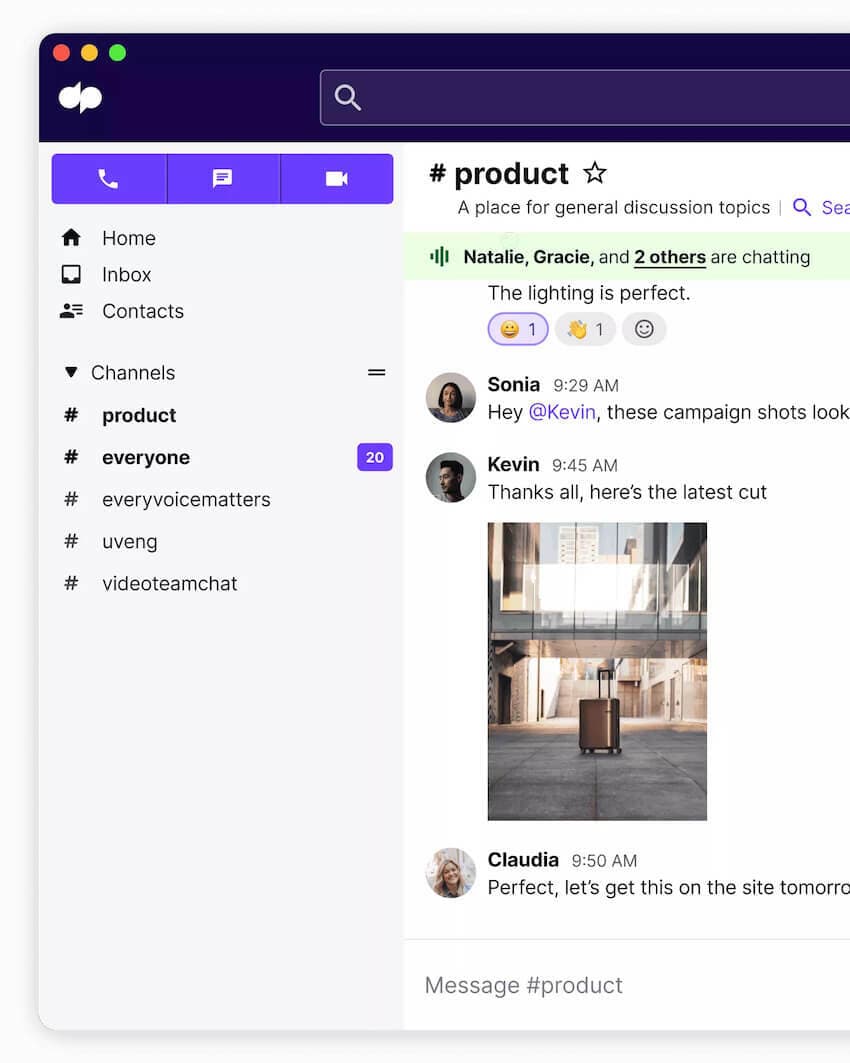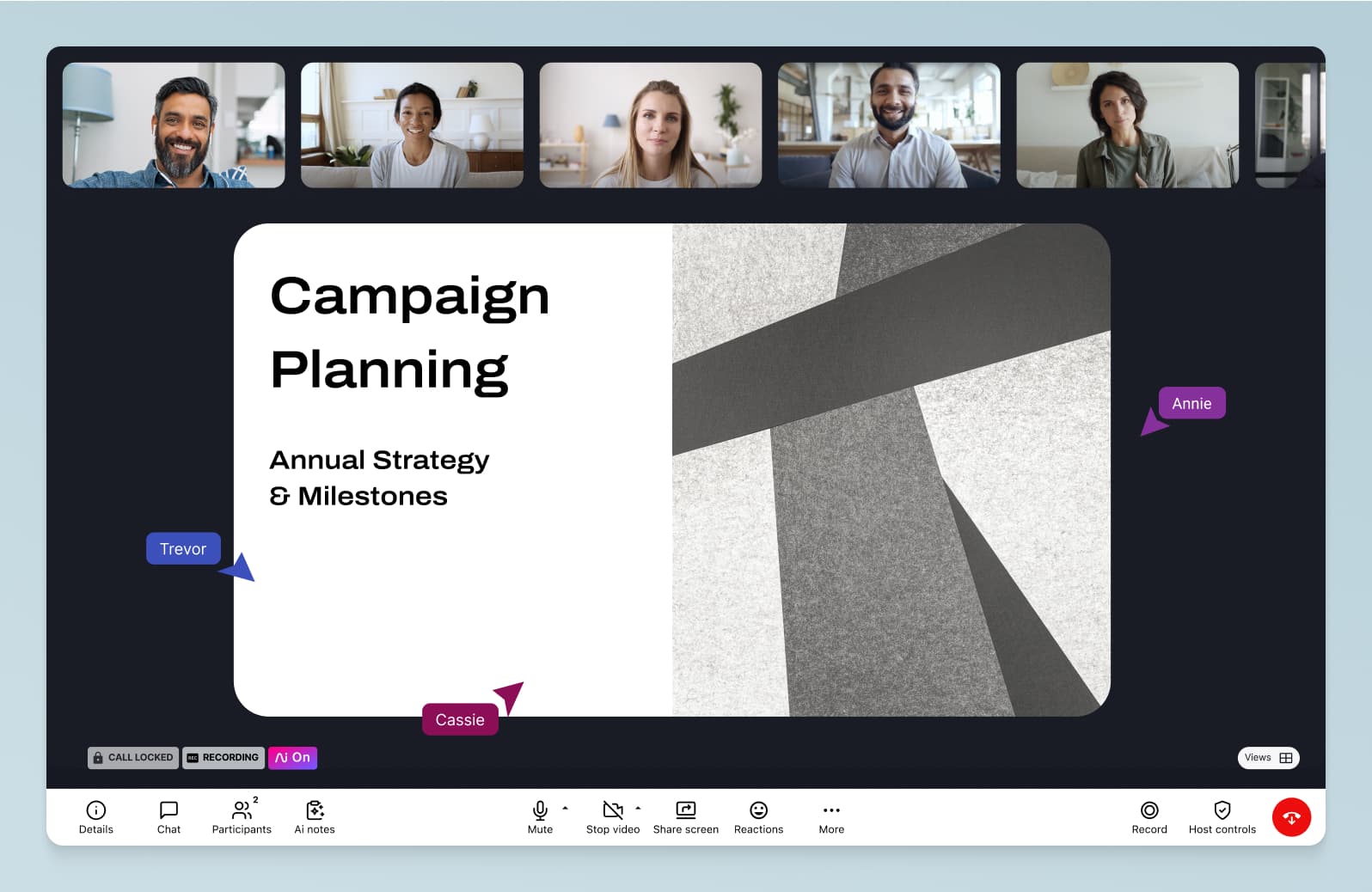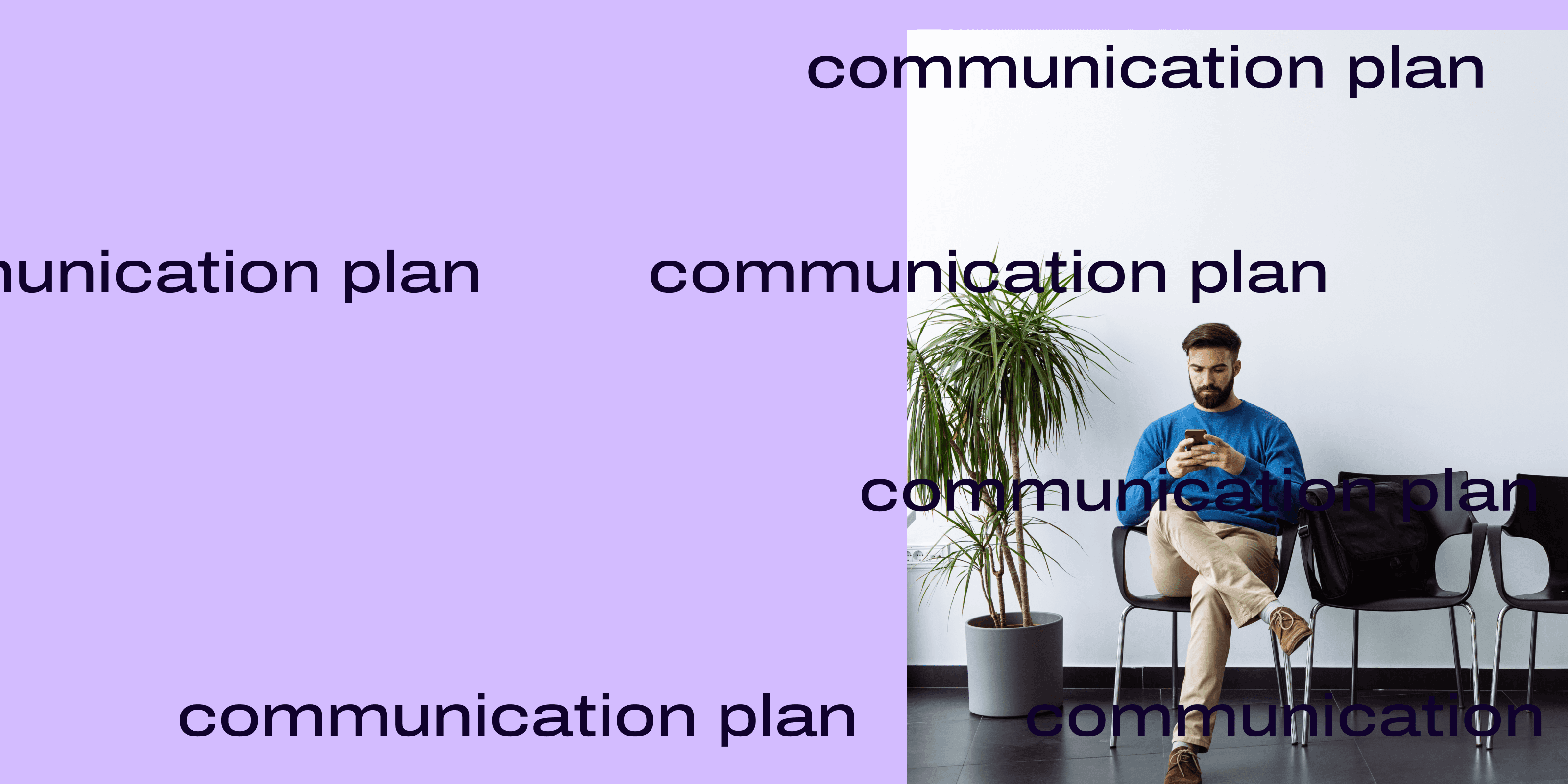I’m probably biased, but working in PR, I think communication plans are essential. I write them almost every day, and I see firsthand how important a good communication plan can be for driving positive business outcomes and ensuring effective information sharing.
Every plan varies, and can cover anything from delivering critical information to a targeted audience, to illustrating the purpose of a product launch or new initiative, and more.
So how can you build a good communication strategy that’s effective at conveying your message? How can you choose the right communication tools and make sure everyone’s on the same page?
In this blog post, I’ll walk you through a step-by-step process for building an effective communication strategy.
What is a communication plan?
A communication plan allows you to deliver vital information to your key stakeholders. It helps you identify the key messages you want to promote, the audience you’re targeting, and the channels you propose to use.
Communication plans are particularly invaluable when you’re pitching new initiatives, launching new products or services to the market, and in times of crisis.
A good plan will also help strengthen your relationships with internal and external stakeholders, so it should apply just as much to employees—since effective internal communication can improve profitability by up to 23%.
Having a robust, AI-powered internal communication system is key to carrying out any effective communication plan. Here at Dialpad, the communications team is spread out across five different states and three different time zones, so having a unified solution for calls, meetings and messages is important in keeping us all aligned.
Dialpad's artificial intelligence (Dialpad Ai) technology is a critical capability that the team uses on a daily basis, because it transcribes calls and allows us to listen back on conversations. So, for example, if a decision is made to change an announcement date during a call, we have a record of that happening and can reference it if needed. Dialpad's Action Items also help make sure nothing slips through the cracks as we navigate requests from a variety of stakeholders.

Our team also loves the Dialpad Channels feature, which allows them to broadcast updates to different groups, or the entire company:

An effective communication plan should include a description of:
Your communication methods: This includes any internal corporate communications that are mandatory and informational beyond just external marketing communications
The frequency of communications: Determine how often you’ll send out each type of communication, including how frequently you need to loop in each stakeholder. You may only want to include executive stakeholders monthly via video conference but update team members daily across all channels
Which communication channels to use: The messages you send usually dictate the right media to employ. Customer and employee outreach could range from mass emails to team conference calls and business-wide meetings
Your audience: A communication plan must be aware of its audience—what do they know, need to know, how do they prefer to communicate?
The owner of your communications: You are the primary owner of your business communications; however, you’ll need to consider whether you’ll be the best messenger. The primary purpose is to create credibility with your audience, so messages could come from your CEO, a subject matter expert, or someone your audience trusts and already has a relationship with
Goals: Every business communication has a set of specific purposes to achieve, whether to transfer information, instruct, persuade, or transform. Ask yourself what you want people to know, believe, and do as a result of your messages. What’s the action plan around your call to action?
Why communication plans often fail
Your communication plan should clearly and concisely provide the necessary information to everyone involved so that your marketing comms and campaigns are delivered on time and within budget. However, things can and do go wrong as follows:
1. Too little information cascaded
Overlapping roles lead to confusion, and confusion causes delays. Make sure the relevant team members are pulled in to complete specific projects and are assigned to the right tasks.
2. Plan’s purpose is unclear
For communication plans to be effective, you must make clear the reasons you’re embarking on this project and what you hope to achieve. Setting SMART (smart, measurable, actionable, realistic, time-bound) goals can help you target realistic and time-related objectives.
This should be followed by setting out detailed expectations for deliverables in team meetings, along with project status reminders and deadlines so that all employees can track progress in real-time.
3. Disregarding what stakeholders have to say
When a stakeholder says they want to be involved, you need to work out how to manage this. Determine if they want daily or weekly updates. They may need to see how the project team is progressing regularly to assess profitability. To strengthen your relationships with stakeholders, respect their communication requirements and accommodate their preferred frequency of communication.
4. No contingency plan
Even the best plans can become unstuck, and if you’re to get your plan back on track, you need a plan B. Include a risk management strategy in your communication plan to overcome obstacles, e.g., changes in scope, to ensure everyone knows how these challenges will be faced.
5. Not sticking to the approved key messaging
When you need to update senior stakeholders on the progress of a project, it’s unlikely that you’ll send them a text message or chat notification. Likewise, when asking a question of a co-worker, you probably won’t present them with a formal memo. Identifying how you’re going to communicate, especially with more of us are working remotely, will help keep things clear.
Determine who’s responsible for each specific type of communication, e.g., the person in charge of company presentations, the intended audiences, frequency, medium, etc., to establish guidelines everyone can follow.
👀 Interested in remote or hybrid work tips?
Grab the Hybrid Work Playbook, which includes real-life case studies and breaks down all things hybrid + remote, from building and sustaining a hybrid workforce to equipping your team for success.
What a communication plan should help you achieve
A communication plan can help you focus your message, reach your target audience, and improve the efficiency of your communications.
Clarify your business’ objectives
A strategic communications plan can be considered akin to a roadmap. Knowing where you want to go is a start, but you’ll need a route to get there, and your plan is your route.
Ensure accurate messaging across the organization
A well-articulated plan will provide stakeholders with the information they need to get everyone on the same page and able to articulate a consistent message. This has to address how best to reach stakeholders, and how employees might communicate internally most effectively.
To complement your communication plan and ensure that messaging remains consistent across employees working remotely, in offices, you might want to consider investing in a communications tool like a UCaaS solution that will provide you with accessible channels of communication for everyone.
That’s what activewear retailer Outdoor Voices did when they moved their HQ, retail offices, customized support teams away from different systems and multiple tools and onto the same communications platform with Dialpad. Staff are now able to provide a consistent experience on one communications platform across all devices. For their team, Dialpad united scattered employees and allowed them to have crisp and clear international calls effortlessly.
Encourage creativity and camaraderie among the team
With employees at all levels of your business involved in your plan and everyone following a single roadmap, teams will feel connected and ready to be creative to reach your new, shared objectives.
Dialpad allows you to harness this creativity and improve cross-team collaboration, equipping your team with screen-sharing capabilities and our integration with whiteboard app, Miro.
Engage employees in your brainstorming sessions with templates, sticky notes, and comments, without needing to switch between browser tabs or apps:

Creating an effective communication plan in 8 simple steps
1. Recognize the key seasons and buying cycles
Every organization has times of year that offer the best marketing opportunities. For example, festive holidays and Christmas are key periods for retail businesses. Your company may have other periods that are more popular for your goods or services, so you’ll need to examine your purchase data to identify these.
When you’ve figured out the best times to communicate your messaging, you can plan your campaigns and pricing around these.
2. Examine your current marketing communications
Before you roll out your communication plan, you need to decide where it’ll fit within your business. So you should complete an audit of where you currently are with your communications across the company to identify any problem areas or gaps in your communication channels and internal and external materials.
Evaluate the scope of your communications
Some PR teams also own their company's corporate social media handles. If that sounds like you, equip yourself with a communication solution like Dialpad that lets you provide omnichannel customer service to manage any customer or media inquiries that come through over Twitter, LinkedIn, Facebook, and so on.
Assess your past and present communications
Once you have your communication materials in one place, identify trends and look for success stories and losses. Has your communications style changed over time? Which of your messages delivered great results and which not so great?
Confer with everyone involved in your communications
Every stakeholder within your organization has their own part to play in your communications. This includes team members and customers. Ask these groups whether they feel your current communications are as effective as they could be? What do they think you could be doing better? Good ways to access this feedback are via surveys, interviews, or emails.
Dialpad’s CSAT surveys allow you to collect feedback instantly at the end of calls, asking customers to rate and explain their experiences and calculating the average CSAT score and response rate automatically. If you're on a public relations team, it's smart to work with your customer support team to better understand customer feedback from these surveys so you can update your future comms strategy accordingly:

Run a SWOT analysis
A SWOT analysis allows you to identify your communications strategy’s strengths, weaknesses, opportunities, and threats. It helps show you areas where you’re failing and the factors that could help improve your communications, as well as those that could potentially harm your business.
3. Establish your communications objectives
Your plan should guide you towards the metrics and results you want to achieve from your communications. Your marketing objectives themselves will go on to define more granular goals, so you don’t need to get too specific at this point.
Some examples of communication goals could include to:
Increase social media followers
The more followers you have on social media, the more visibility your brand will have. Such social proof will boost your brand’s credibility. Your plan should detail which social media platforms you intend to post on, how regularly, and what type of content you plan to share.
Increase web traffic to product or corporate announcements
The more clicks on these, the more conversions you’ll see. Your plan should include the creation of regular blog posts on industry issues—which topics you’ll cover, how often you’ll post these and how you’ll SEO optimize them to drive traffic.
4. Determine your unique selling proposition (USP) and brand/mission statement
To communicate effectively, you need to establish your brand’s identity, and your unique selling proposition (USP) is part of this.
Every brand has its own unique value proposition, i.e., something that makes it uniquely different (in a good way) from competitors. Your USP must illustrate to customers your special trait.
When you’re determining your USP, ask yourself which problems you solve with your products or services, what do you have that your competitors don’t, and how difficult is it to copy any of your products or services?
5. Identify your target audience
To establish strong relationships, you need to pin down your target demographic. That way, you’ll ensure you reach more people with targeted messaging. To help you find out this information try one of these tactics:
Survey your current customers
Via all platforms on which you engage with customers, ask them questions about their age, gender, and favorite products or services.
Inspect your social media followers
Check out your current followers and identify any trends. It’s also possible to look at your competitors’ followers to see the kind of audiences they’re attracting.
Once you’ve gathered the relevant information, you can develop a short description of each type of audience, e.g., Gen Xers looking for their first home. This should help you when you’re creating targeted messaging to suit each segment.
6. Identify potential media targets and other high-ROI social channels
If your company regularly interacts with entities or people outside your customer base, include these in your plan as well. For example, if your message is newsworthy, you should make sure to include media organizations. Other potential targets include government agencies and nonprofits.
It’s important to ensure your brand is interacting on channels that are the most popular with your audiences—but equally important to determine which of these deliver you the highest ROI.
According to a recent report, Facebook is the social media channel that offers the highest ROI, with over 40% of marketers saying it was the most effective channel for their business. It may be that different channels work best for your brand—but be sure to include these in your project communication plan.
7. Create your brand messages for each target audience
Once you’ve decided on the audiences you want to communicate with, it’s time to craft brand messages for each segment. Use your brand statement as the basis for your audience-specific messages, then tailor your messages by asking the following questions:
What does this audience need to know about my organization?
Does this audience have any misconceptions that can be cleared up?
What type of language should be used to make this audience feel understood?
What kind of values does this audience have in relation to our brand?
8. Make an outline of your communications strategies and campaigns
You’ll need to know what your communication plan will look like in real life by defining your tactics and campaigns. Your communication strategies will explain:
What you need to do to spread your message
How you’ll execute this
When and how frequently you’ll perform these actions
Your strategy and tactics will follow on from the objectives you’ve established earlier.
As an example, if your objective is to drive website traffic, you could execute an integrated marketing and communications campaign consisting of weekly blog posts, social media promotion, and press releases around a specific thought-leadership theme.
Effective communication starts with an effective communication plan
An effective communication plan is critical to building strong relationships with customers and between employees and achieving your business goals.
To execute your communication plan and get the right messages to the right audiences, you must equip yourself with a communication solution worthy of the task. Dialpad’s cloud-based UCaaS platform is packed with helpful features to enable your teams to communicate effectively, both internally and externally.
Need a unified communications solution to pair with your communications plan?
Book a product tour of Dialpad to see how easily you can make phone calls, send instant + SMS messages, and have video conferences from one app!










